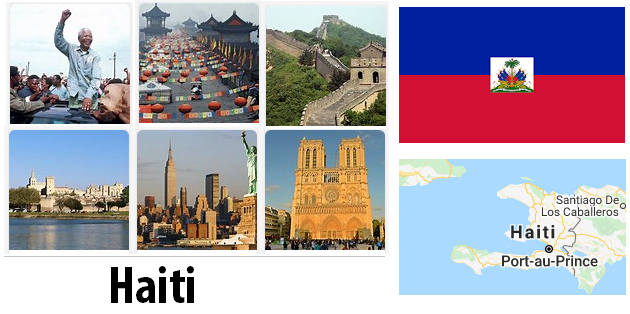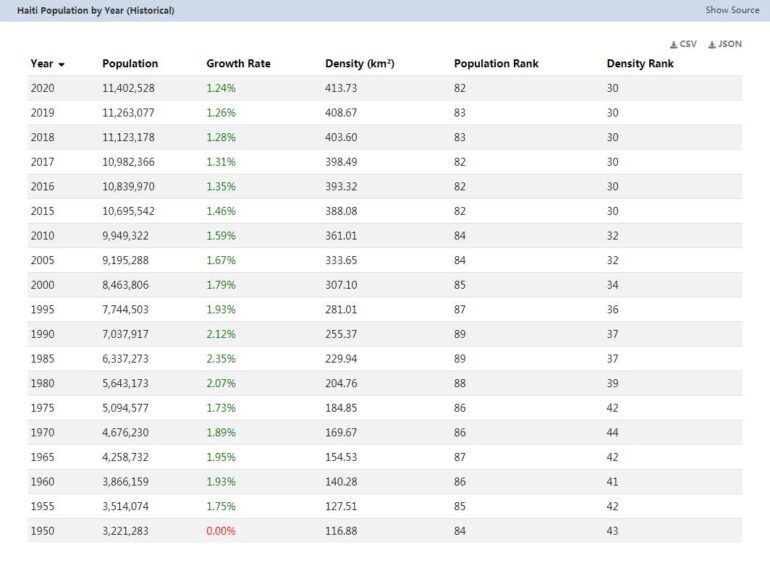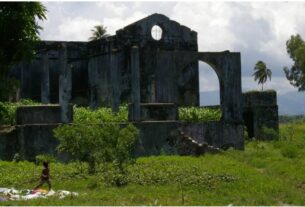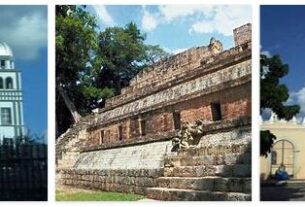The island was discovered by Christopher Columbus on December 6, 1492. Due to its resemblance to the land of Spain, it was called Espagnola, but that name instead of Haiti survived, which in indigenous language means “mountainous”. In fact, its territory is the most rugged and highest of the whole Antilles archipelago.
From the date of its discovery begins the history of the island which has long been the only independent Negro territory outside Africa.
The first beach to be touched was the San Nicolò peninsula; four days after the port of the Conception, then the whole north coast.
Once one of the ships was shipwrecked, Columbus, on December 25, built the “Navidad” fort with his timber, considered the first Spanish factory in America. Meanwhile, the “Pinta” was exploring the east coast.
In 1496 Columbus led a second expedition and discovered and visited large internal spaces on the island; on the southern shore he founded San Domingo, which was later rebuilt in 1502.
The whole island was occupied, therefore, by the Spaniards who subdued the defenseless “Indios” tribes or, better to say, caused in a few years the complete elimination of that race, decimated by diseases and killings.
Soon, however, the island was almost abandoned because the colonists headed en masse to Mexico and Peru, attracted by the wealth of the mines discovered there.
The raids of pirate ships of French, English and Dutch origin contributed to this exodus.
Some French, at the end of their pirate career, decided to stay on the island to enjoy a peaceful life after many raids, and in fact occupied the whole western part; while the eastern one continued to be a Spanish colony. This was the first political division of the island and this happened around 1630.
This colony was officially recognized by France by the Sun King, Louis XIV, who in 1661 appointed Bertrand d’Ogeron as Governor.
In 1697, with the Peace of Ryswick, Spain also agreed to officially recognize the French colony.
In the Spanish part the Negroes mixed with the whites giving rise to the mulattos, while in the French part the marriages took place mainly within the same black race, so, over time, the Negroes formed the largest part of the population. See Countryaah for population and country facts about Haiti.
Immediately after the outbreak of the French Revolution, the new ideals of freedom and independence found a favorable environment on the island; Negroes rebelled against their ancient rulers. It was the only slave revolt in history that was successful.
Haiti had independence in 1804. After intricate events, the entire island in 1844 was definitively divided into the two independent republics of Haiti in the west and San Domingo in the east.
In 1849 the Negro Faustino Soulouque had himself proclaimed emperor with the name of Faustino I. After ten years a revolution dismissed him and restored the republic under the presidency of Fabre Goffrard.
From 1886 onwards all the various presidents were deposed by the revolutions until, in 1915, the assassination of the then President Vilbrun Guillam Sam occurred. This resulted in the landing of US troops in July of that year, which imposed President Sudre Dartiguenave on the island.
In 1922 there were regular elections that entrusted the task to Luigi Borno, who was then re-elected in 1926. He obtained a huge loan from the USA that allowed him to start those improvement works that allowed Haiti to make huge strides in progress.
The last president, Stenio Vincent, took office on November 18, 1930.
The republic of Haiti had complete independence when US troops left the island in 1934.
In 1937, a serious accident occurred on 9 and 10 October. As many as 12,000 Haitian workers were killed by the Dominicans, only guilty of working in their area with lower wages than the premises thus taking away their work. President Vincent intervened immediately by asking San Domingo to immediately investigate an investigation to punish the perpetrators of the massacre, to compensate the damage to the families affected and to have solemn assurance that such barbarism would never happen again. Then he also asked for the mediation of the US and Mexico. All this was considered too weak behavior and the settlers, instead, in retaliation attacked the village of Capotillo on the border with San Domingo.
Fortunately, calm could be restored in January 1938, behind the Dominican government’s promise of a payment of $ 750,000 and the punishment of the guilty.
Vincent continued his public works program and worked extensively in the agricultural sector by expanding and varying crops, especially those of bananas and coffee. But the worldwide drop in prices dealt a heavy blow to production and the US also decreased their imports of coffee, produced in 1940/41.
On May 15, 1941, Elie Lescot was elected president, who, finding the economic situation rather serious, had to resort to US aid. And to the SU he then lent his cooperation by declaring war on the Tripartite in 1941, giving impetus to the production of rubber for the SU, but the latter had to give up in 1944 to intensify the production of food products then much more necessary.
In that year many changes occurred in Haitian society: it was established that women could dispose of their income freely, provided that they contributed to the maintenance of the family and also allowed them to rise to public administrative positions, it was established to hold new elections a year later the end of the war thus extending Lescot’s mandate until 1951. Instead in 1946 a revolt forced him to flee to the USA. A provisional government was established with the triumph of the democratic party and the president-elect was Estimè Dumarsais, former Minister of Education during the Vincent presidency. The new Constitution was applied which sanctioned serious restrictions on foreign capital, allowing workers to organize themselves and the supremacy of mulattoes in the country’s leadership was strengthened.




